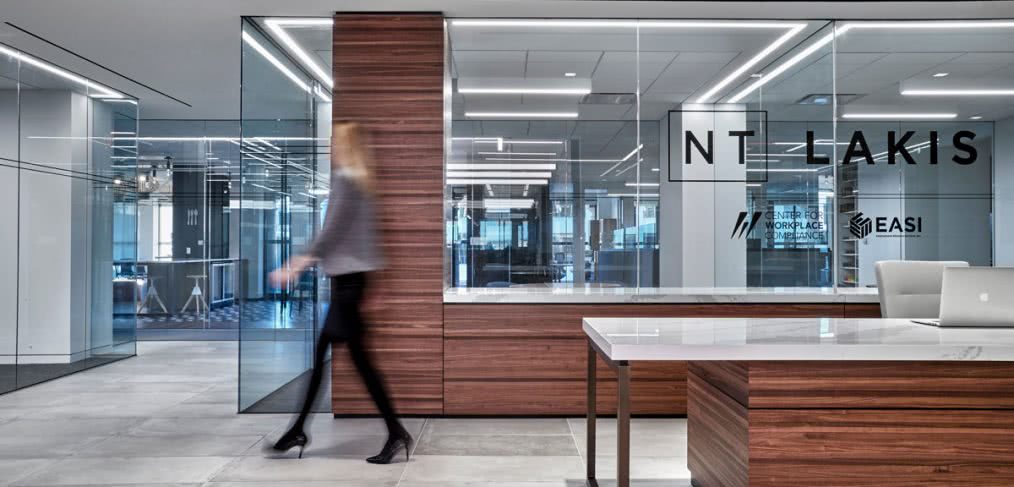
Branding 2018 — What’s in Store?
Consumers are changing but are companies? Claire Propsting interviews CallisonRTKL Senior Associate Vice President Sarah Kimes about how multi-channel marketing, new status symbols and mission-driven branding are changing in 2018.
Branding: it’s what the savviest consumers love to hate. And when done right, what they hate to love.
For the cynics among us, the very word “branding” conjures up images of advertising executives trying to promote all-consuming consumerism and an outdated version of the American dream.
It’s perhaps because of this negative connotation that the rampant consumerism of the early 2000s has become much more thoughtful in recent years. Sales of luxury goods and cars are down, and McMansions are decidedly passé. Instead, the whole ideas of luxury and consumerism have changed. The things you buy and display are extensions of your personal brand. All the better if they happen to get a lot of likes on social media.
This all fits in nicely with our countless time-saving app services. Paying someone to run errands for you or deliver meals to your door isn’t entirely about not wanting to do those things yourself; it allows you to spend your time on things you care about more. Today’s true luxuries are spending time with family and friends, drinking wine and eating delicious food. The smartest brands are tapping into these new status symbols.
So, how can companies, who must sell products to survive, win the hearts and minds of people who have no interest in accumulating things?
To be clear, most people haven’t decided to eschew their fashionable clothes and artisanal cheese in favor of wearing burlap sacks and eating bugs. People still want to buy things, they’re just being more conscious and intentional about it.
That consciousness is leading to two major shifts: a move toward novel experiences and travel, and an insistence on transparency. Millennials in particular feel motivated to “vote with their dollars” and support brands that complement their own values, and other generations are following suit. Nothing will turn off the masses like hypocrisy, inauthenticity, or worst of all, an actual scandal. In fact, more than half of Millennials have boycotted a company for irresponsible or deceptive business practices.
With countless brands to choose from, consumers know that if they want to boycott one brand, they can turn to five more to meet the same need. How do brands compete in that kind of environment?
Sarah Kimes, Associate Vice President at CallisonRTKL, says it always has been and always will be about creating an emotional connection with customers.
“The best brands have always understood that they have to create these emotional connections. Those rules will never change. It’s just that today there are more channels and higher expectations.”
The Missing Piece
Kimes says one place brands can continue to invest their time and energy is within the workplace.
“Employees hold major potential as brand ambassadors,” Kimes says. “If employees are excited and happy about where they work, it really rubs off on customers and it becomes part of the brand’s image. Consumers love brands who love their employees. Brand advocacy is a huge competitive advantage.”
She says Southwest Airlines is one of her favorite examples. “Southwest is probably the most obvious example of something like this—the employees are funny and fun and a pure representation of the brand.”
But Kimes cautions that you don’t have to be a big brand to take advantage of employee brand advocacy or elevating a brand through the built environment.
“If you weave an authentic brand throughout a space, even a small law firm like NT Lakis or a non-profit like the American Insurance Association can gain major brand value from employee enthusiasm and the physical workplace,” she says.
It’s All About the Mission
When it comes to corporate social responsibility (CSR) programs, Kimes says that brands have to stand for something and only the most authentic and impactful will survive.
“Most consumers don’t call it ‘CSR’ or make that direct connection; it’s done more through association, but it’s definitely a key differentiator,” Kimes says.
The data backs up what Kimes says: more than 90% of Millennials prefer brands associated with a cause. And with access to information becoming easier and easier, consumers can demand transparency.
“Super-empowered consumers continue to ask about the intrinsic value of what they’re buying, where they’re buying it and what the alternatives are. Their overall message is don’t waste my time.”
2018 and Beyond
2018, and likely the next decade, will continue to focus on this “super-empowered consumer” and Kimes says people will continue to demand more and more transparency.
“Consumers expect transparency and they expect to find something good when a company is transparent. That doesn’t always mean they’ll spend more money in the short term, but it does create a stronger preference for the brand and builds loyalty.”
Technology, of course, is a huge factor in all of this, but the demand is for all channels, both digital and physical, to give consumers the same brand experience. Companies are focusing on real-time conversations on social platforms and with the constant onslaught of information hitting consumers all hours of the day, brands will only be able to get their attention by surprising, entertaining and delighting them.
REI is a brand that Kimes says is doing everything right on this front. “They tie everything together. Their in-store branding, their campaign to get more people outside, their knowledgeable, enthusiastic employees, their CSR program and their digital experience all come together seamlessly. Their customers feel really good about shopping there. That’s the best way brands can stay top of mind in 2018 and beyond.”
